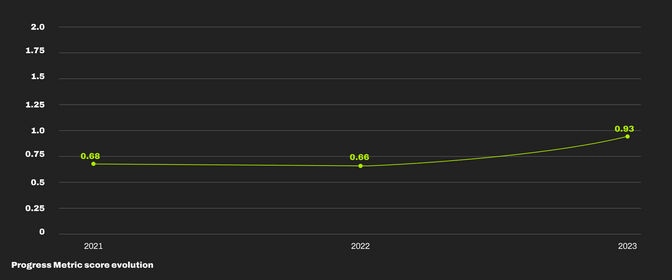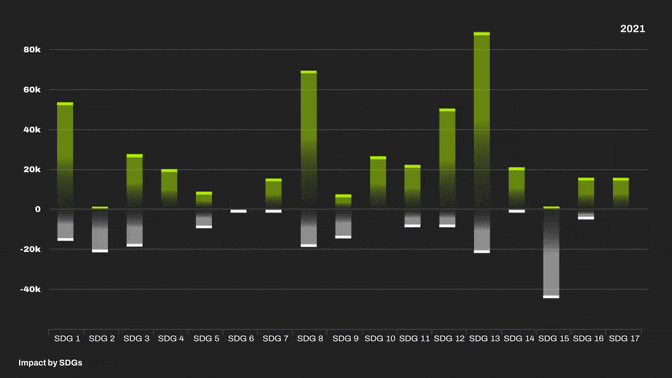Like other businesses and institutions, we aim to reduce the negative impact of our activities, be it environmentally, socially, or economically. We are aware that there is always room for improvement and that we can do better. However, we also know this is not where we have the most influence.
As a digital service provider, we are part of several value chains. What is the point of having a small carbon footprint and developing environmentally friendly products if they are used in extractive or unsustainable value chains? The questions of "WHAT" we work on and "WHOM" we work for are, in fact, just as crucial as HOW we work—possibly even more so.
We developed the Progress Metric to gain a systematic overview of the impact of our client projects. This tool rates our projects according to the UN Sustainable Development Goals (SDG); the previous blog post explains how it works and the methodology used.
A systematic evaluation of all of our projects
We started evaluating our projects in 2021. We had a rough idea of what to expect from the evaluation, not least because we have strict criteria regarding who we will and will not work with. However, the Progress Metric gave us a more structured and precise overview of our portfolio. This was possible thanks to the important work carried out by our specially trained assessors, who also continuously provide evaluations of potential clients on request. This process is in addition to the ethical check that we have had in place for years.
The Progress Metric allows us to measure the progression and trends of our project portfolio precisely. This is particularly important because we have set ourselves objectives in this area, making our portfolio more sustainable a priority.
Giving sustainability the place it deserves
In concrete terms, this means that Liipers weekly receive a summary of the metrics regarding both finances (earnings, profitability) and sustainability. This includes a global sustainability score and a reference to the SDG that receives the most coverage. Besides these weekly reports, everyone can access the detailed evaluations and data. This way, we know how we are doing, giving sustainability the place and the prominence it deserves. In other words, we are no longer measuring the health of Liip solely in financial terms but also according to sustainable development criteria.
So, where do we stand?

In 2021, our global score was 0.68 (averaged across the year); in 2022, our score was 0.66, which then jumped 40.1% to 0.93 in 2023. In 2023, we worked on new client projects that positively impacted areas such as organic farming, smoking prevention, and even cantonal administration. This is not least due to special efforts relating to Business Development, one of the main objectives of which is to drive this portfolio shift. As we explained when presenting the Progress Metric, our tool is somewhat simplistic, given that the impact is multiplied by the hours involved, i.e. what we sell to our clients. Nonetheless, the progression of our figures is reliable since the methodology is consistent.
Another fact explaining this trend is that we have reduced or ceased our activities on projects with a less positive score, which has undoubtedly improved our score overall. We have also noticed that some of our clients are making improvements in terms of sustainability. This is particularly the case in retail, with significant results in transport, product environmental compatibility, and attempts to combat food waste.

In 2022, we noted that some SDGs were less positively covered. This was the case for SDG 15, relating to life on earth. We weren’t involved in the biodiversity sector then. Therefore, We have worked on this aspect and aim to become a digital partner for initiatives in this domain.
Sustainable development is a continuous process, and there is undoubtedly plenty more to do. The Progress Metric gives us a clearer view of our progress and broadens the concept of a company’s health beyond purely economic factors.
